News Release
June 28, 2023
Director’s Orders (list of waters with aquatic invasive species) updated to include Tonto Creek; Tonto Creek Hatchery closed to public
PAYSON, Ariz. — The Arizona Game and Fish Department (AZGFD) has confirmed the presence of New Zealand mudsnails, an aquatic invasive species (AIS), in upper Tonto Creek approximately 2.5 miles downstream of Tonto Creek Hatchery. AZGFD continues to conduct surveys in the area to determine the extent of infestation. Tonto Creek Hatchery will remain closed to the public. This will provide the department with time to enhance biosecurity protocols and evaluate infrastructure investments that could further bolster biosecurity.
In response, Tonto Creek is now listed as an “Aquatic Invasive Species Affected Water” per Director’s Order 2, effective June 19, 2023. Director’s Orders are authorized by ARS §17-255.01, which include lists of aquatic invasive species and waters, and decontamination protocols. Anglers and others who recreate at Tonto Creek (i.e., hiking, camping, swimming, wading, equestrians, etc.) are now required by law to clean, drain, dry and decontaminate their equipment as prescribed in Director’s Order 3 before using another Arizona water, just as they are required to do so at other waters with New Zealand mudsnails or other AIS.
Other waters (in addition to Tonto Creek) confirmed as having New Zealand mudsnails are: Canyon Creek, Oak Creek, Verde River below Bartlett Dam, lower Salt River, Lake Mead, Lake Mohave, and the Colorado River from Davis Dam to I-40. All AIS-affected waters are listed in the Director’s Orders.
What can I do to help stop the spread of AIS?
Cleaning, draining, and drying watercraft, equipment, and fishing gear is an effective way to prevent the spread of AIS, including New Zealand mudsnails, to other locations. Below are the requirements for decontaminating your waders, equipment, and gear.
After fishing, scrub the bottom of boots or waders with a brush to remove all mud, plants and other organic materials. Then choose one of the following options before using the equipment and gear in the next body of water:
Option 1: Submerge waders and gear in a large tub filled with a quaternary ammonia-based institutional cleaner. If using consumer-grade 409, the solution does not need to be diluted. If using a product such as Super HDQ Neutral, mix 6 ounces per gallon of water. Equipment must be soaked for at least 20 minutes, scrubbing and inspecting all items before rinsing. The rinse water must be from a source free of AIS (to avoid re-exposure), and the chemical bath must be properly disposed of away from the body of water.
Option 2: Place waders and boots in a freezer overnight between uses.
Option 3: Dry waders and equipment completely for seven consecutive days (May through October) or 18 consecutive days (November through April).
Option 4: Spray or soak waders and gear with 140 degree Fahrenheit water for at least 10 minutes.
*Note: AZGFD does not endorse any particular product. Mention of any brand is for example only.
The New Zealand mudsnail is an invasive snail that is ovoviviparous (live bearing) and parthenogenetic (reproduces asexually). Therefore, it only takes one snail to start a new population. The snails are very small and can easily be tracked to other areas with waders and shoes.
These snails were first found in Arizona in 2002 in the Colorado River below Lake Powell in Lees Ferry, and then progressively moved downstream through the Grand Canyon and into Lake Mead and Lake Mohave. In 2019, they were detected in AZGFD’s Page Springs Hatchery. They have also been detected in Canyon Creek, Oak Creek, the lower Verde River below Bartlett Dam, the lower Salt River, and now, Tonto Creek. Director’s Orders apply at these locations in addition to any waterbody listed in Director’s Orders.
New Zealand mudsnails are a concern because they compete with native invertebrates for food, posing potential harm to Arizona’s native and sportfish populations, as well as native mollusks. AZGFD reminds anglers and recreationists to “clean, drain and dry” – and especially decontaminate — their equipment or watercraft before exiting waters designated as having AIS.
“It is everyone’s responsibility to be stewards of the places that we love,” AZGFD Aquatic Invasive Species Program Coordinator Kate Dukette said. “Taking a few minutes to clean your gear after use is one of the best ways to protect Arizona’s waters and fisheries regardless if you are in an AIS-affected water or not.”
Aquatic Invasive Species are non-native species that are often unintentionally introduced by human movement. They do not have predators outside of their native range, and are able to outcompete native species. They can be animals, plants and even pathogens that cause disease in native fish or other aquatic animals. They can often be invisible to the naked eye, making them even more difficult to control. Once introduced, they can alter ecosystems by interrupting food chains, cause damage to boats and other recreational gear, clog up water and power infrastructure, and pose safety hazards.
For more information on Director’s Orders, which include lists of aquatic invasive species and waters, and decontamination protocols, visit https://www.azgfd.com/fishing-2/aquatic-invasive-species/ (scroll down toward the lower end of the page).
